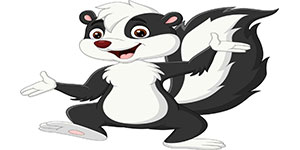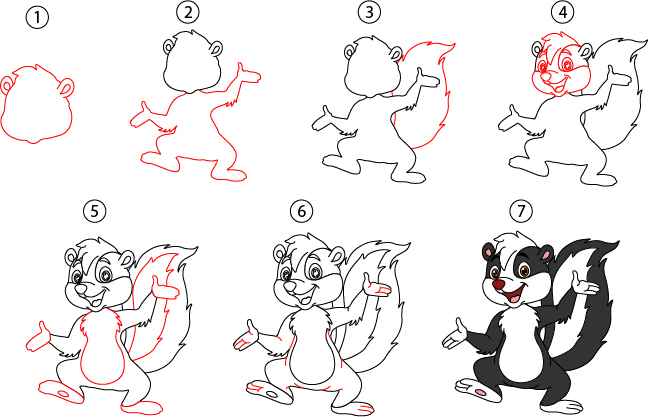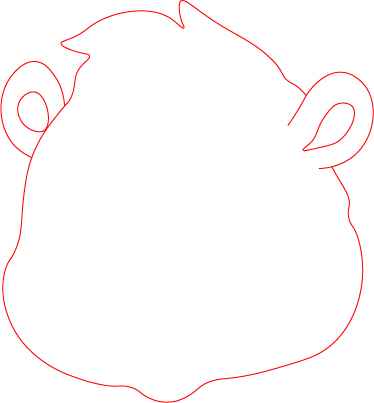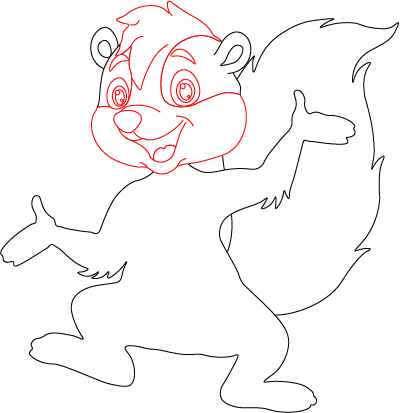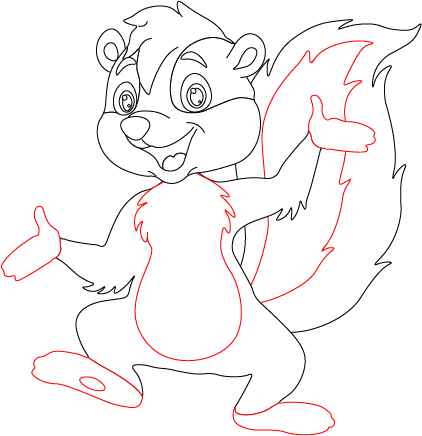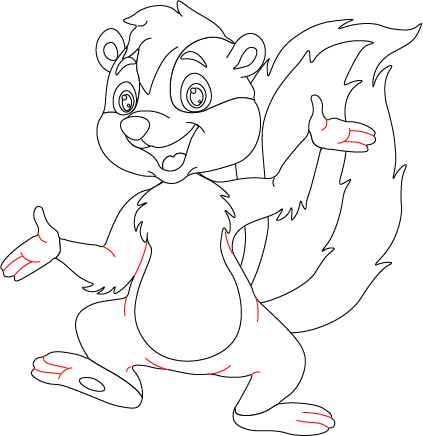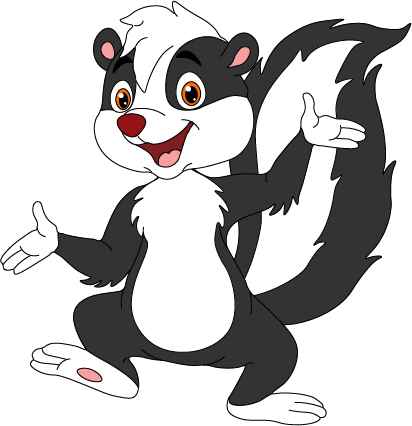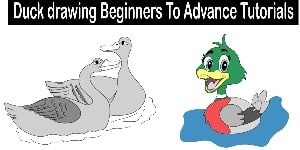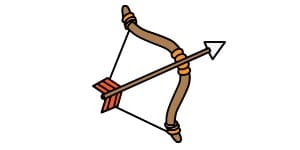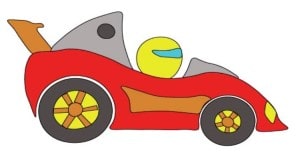Skunk Drawing
The diversity and beauty of the natural world can be captured in art, allowing us to view well-known animals in a fresh way. The skunk, a mammal both feared and admired for its unusual look and pungent stink, is one such fascinating subject. By mastering the skill of skunk drawing, one can explore the world of the skunk, deciphering its intricacies and recognizing the paradoxical beauty and caution it contains. The value of skunk drawings as a way to embrace the whimsical, appreciate contrasts, and establish a connection with nature is examined in this essay.
Skunk drawing easy allow us to observe the intricate contrasts present in nature. With its striking black and white fur, the skunk presents a stark visual dichotomy. The artist can explore the interplay of light and shadow, using various shading techniques to emphasize these opposing elements. This contrast serves as an aesthetic representation and symbolizes the delicate balance between danger and defense that the skunk embodies in the animal kingdom.
Skunk Drawing for Kids
By creating drawings of skunks, artists may refute the widespread belief that skunks are just a bother because of their smell. Through highlighting the skunk’s physical characteristics and behavior, artists can foster compassion and understanding for this frequently misinterpreted animal. The technique of draw a skunk for kids enables the artist to depict the animal in a fresh way while capturing its grace, elegance, and distinctive features. In response, viewers might value skunks as integral parts of ecosystems and recognize their significance in preserving equilibrium.
Amazing creatures, skunks are distinguished by their unusual appearance and smell. You have arrived to the correct location if you want to write more skillfully and convey the essence of these incredible animals on paper. To help you sketch a realistic and detailed picture of a skunk, we’ll take you step-by-step through the process in this video.
Materials Needed:
- Drawing paper
- Pencils (HB, 2B, and 4B)
- Eraser
- Fine-tip black marker
- Reference image of a skunk
Skunk Drawing Step by Step:
Step 1:
Start with a circle for the head. These initial shapes will serve as the foundation for the skunk’s form. Ears Refine the shape of the skunk’s head by adding details. Ears are slightly rounded and sit on top of the head. The Skunk head is large, so we draw a large circle. The head of the skunk is unique and can be seen in the given image of a skunk drawing for kids.
Step 2:
Outline the Body Extend the skunk’s Body from the head, using curved lines to create a natural shape. The skunk’s Body should have a slightly elongated, oval-like appearance. Also, draw the hands and legs of the skunk. Skunks have two hands and two legs. Take your time to capture the skunk’s posture and the flow of its Body.
Step 3:
Skunks extend a long, thick, and fluffy tail from the lower back of the body shape. The tail should be wider at the base and taper towards the tip, resembling a plume of fur. The tail is long and bushy.
Step 4:
Add two small circles within the head circle to represent the eyes. Place them slightly apart and towards the upper side of the head. Above the eyes, draw curved lines to create the skunk’s eyebrows. Below the eyes, draw a small triangular shape for the nose. Draw the open mouth of the skunk. Also, add the hair on the forehead of the skunk.
Step 5:
Focus on adding the characteristic fur texture to bring your skunk drawing to life. Using light, short strokes creates a sense of fur along the Body, leaving the center of the skunk’s Body slightly darker than the sides. Pay attention to the direction of the strokes, following the contours of the skunk’s form. Use a softer pencil (2B or 4B) to achieve a darker tone for the skunk’s Body and tail.
Step 6:
Add the texture and wrinkles to the skunk drawing. Let’s draw the line on the hand, legs, and Body. These lines show the texture and wrinkles in the Body, which can be seen in an image of the skunk drawing below.
Step 7:
It is the final step of the skunk drawing. In this step, we add color to the skunk. The color of the skunks is mostly black and white. We also used a black-and-white combination of the color. Kids can use grey and white colors. It is quite easy and simple. Kids, pick your black and white colored pencils and fill in the color in this cute skunk drawing.
Conclusion:
Although Draw a skunk can initially seem difficult, you can produce an accurate and detailed picture of this intriguing species by following these step-by-step instructions. Remember to always be patient, take your time, and be proud of your individuality. You can quickly become an expert at depicting the elegance and distinctiveness of a skunk drawing on paper with practice. So, pick up your pencils, embrace the challenge, and enjoy the process of bringing a skunk to life through your art.

